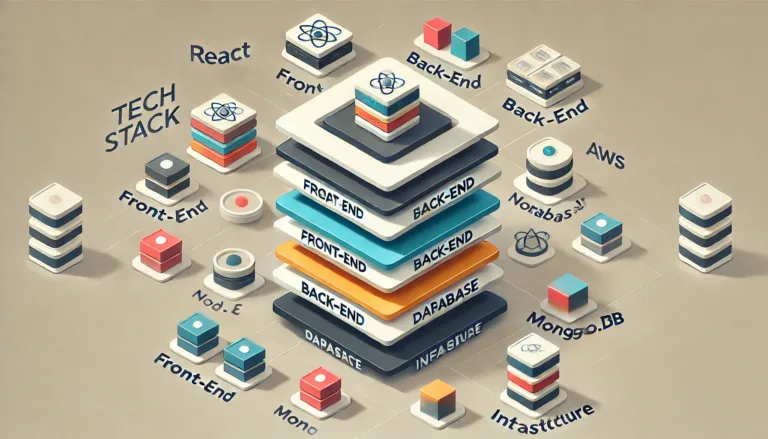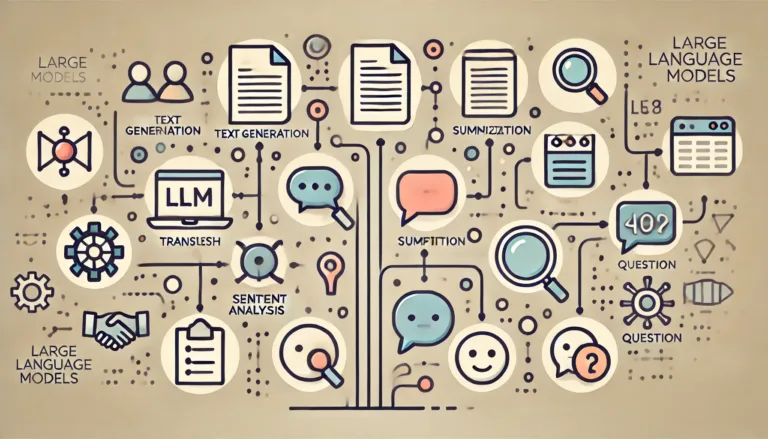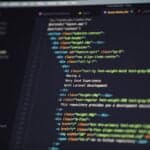Getting to Know Machine Learning
Machine learning is shaking up many fields by teaching computers to make decisions with hardly any help from us humans. Let’s break down the basics of machine learning and see how it’s changing the game across the board.
What the Heck Is Machine Learning?
In simple terms, machine learning is a part of artificial intelligence (AI) where computers get smart from data, spot patterns, and make decisions on their own. As GeeksforGeeks puts it, there are three main types of machine learning algorithms:
| Type of Algorithm | What It Actually Does |
|---|---|
| Supervised Learning | Learns from examples that are labeled. Think of tasks like sorting your emails (spam or not). |
| Unsupervised Learning | Finds hidden patterns in data without any labels. Think market basket analysis (those “people also bought” suggestions). |
| Reinforcement Learning | Learns by making decisions and seeing what happens, like training a dog with treats. This one’s behind many game AIs. |
Eating Data for Breakfast
To train these algorithms, you need tons of good data. One big problem? Getting your hands on enough of it. Training even a “simple” model could need millions of examples, which is often tough to gather (Addepto).
And here’s the kicker: these models can feel like “black boxes,” making it really hard to figure out why they make certain decisions. That’s a big no-no in fields like healthcare and finance, where you need to know the why behind the what (Medium).
Where’s Machine Learning Making Waves?
Machine learning is popping up everywhere, shaking things up left and right.
- Recommendation Systems: Ever wonder how Netflix knows which shows you’ll love? Machine learning looks at what you’ve watched and picks out your next binge-worthy series.
- Image Recognition: From healthcare (spotting tumors) to security (unlocking your phone with your face) to driverless cars (navigating streets), this stuff’s taking over.
- Natural Language Processing (NLP): Chatbots that actually get what you’re saying, translation services that don’t sound like a robot, and social media sentiment analysis. It’s all thanks to NLP (natural language processing techniques).
- Self-driving Cars: These cars use machine learning to process sensor and camera data, making super-fast decisions to keep you safe and sound on the road (self-driving car technology).
These examples show just how flexible machine learning is in tackling tricky problems and boosting performance across various fields. If you’re itching to learn more, check out AI algorithms or dive into AI certification programs. For hands-on coding, look up AI in Python or AI in Java.
Machine learning is only getting bigger and better, making it an exciting area to explore. Whether you’re a developer or just curious, there’s plenty here to keep you hooked.
Machine Learning Algorithms
Learning about machine learning is like unlocking the secrets of a candy store; there are many flavors, and each has its own charm. Here, we’ll chat about some key types of machine learning algorithms: Supervised Learning, Unsupervised Learning, Reinforcement Learning, and Ensemble Learning. Let’s break it down, shall we?
Supervised Learning
Think of supervised learning like a student with a guide book. The algorithms learn from labeled data, which means they know the answers ahead of time. They learn to map inputs to outputs by training on a dataset that contains both.
Examples of Supervised Learning Algorithms:
- Logistic Regression
- Support Vector Machines (SVM)
- Decision Trees
- Neural Networks
| Algorithm | Use Case | Description |
|---|---|---|
| Logistic Regression | Classification | Predicts a yes/no outcome based on input variables. |
| Support Vector Machines | Classification | Finds the line that best separates different groups. |
| Decision Trees | Classification, Regression | Splits data into branches based on feature values. |
| Neural Networks | Classification, Regression | Mimics the brain to spot patterns. |
Curious about more? Take a peak into ai algorithms.
Unsupervised Learning
Unsupervised learning is the Sherlock Holmes of machine learning. It deals with unlabeled data and finds hidden patterns or groups.
Examples of Unsupervised Learning Algorithms:
- k-Means Clustering
- Hierarchical Clustering
- Principal Component Analysis (PCA)
- t-Distributed Stochastic Neighbor Embedding (t-SNE)
| Algorithm | Use Case | Description |
|---|---|---|
| k-Means Clustering | Clustering | Splits data into k groups based on similarities. |
| Hierarchical Clustering | Clustering | Builds a tree of clusters by merging or splitting them. |
| Principal Component Analysis | Dimensionality Reduction | Shrinks data size while keeping important bits. |
| t-SNE | Dimensionality Reduction | Makes sense of high-dimensional data in 2D. |
Wanna dig deeper? Check out ai software development.
Reinforcement Learning
Reinforcement Learning is like training a puppy. The agent gets rewards for good behavior and learns to avoid bad things. The goal? Maximize the treats!
Examples of Reinforcement Learning Algorithms:
- Q-Learning
- Deep Q-Network (DQN)
- SARSA
| Algorithm | Use Case | Description |
|---|---|---|
| Q-Learning | Policy Learning | Uses a Q-table to figure out the best actions. |
| Deep Q-Network | Policy Learning | Mixes Q-Learning with neural networks to deal with more complex problems. |
| SARSA | Policy Learning | Like Q-Learning but updates based on the actual action taken. |
Wanna train your brain? Explore more at artificial intelligence programming.
Ensemble Learning
Ensemble learning is like assembling a superhero team. Combining several models into one supermodel helps improve the overall predictions by merging strengths and covering weaknesses.
Examples of Ensemble Learning Techniques:
- Bagging (e.g., Random Forest)
- Boosting (e.g., AdaBoost, Gradient Boosting)
- Stacking
| Technique | Use Case | Description |
|---|---|---|
| Random Forest | Classification, Regression | Grows multiple trees and combines their output. |
| AdaBoost | Classification | Fixes the mistakes of previous models by focusing on tricky cases. |
| Gradient Boosting | Regression | Builds models in stages to correct errors progressively. |
Curious how to wield these powers? Learn more at ai coding languages.
Exploring these algorithms has prepped me for diving into more advanced AI challenges. Whether you’re leveling up your knowledge or gearing up for ai interview questions, these algorithms are the bread and butter of machine learning. Bon appétit!
Why Data Preprocessing Matters
Getting your data ready before feeding it into a machine learning model is like prepping your ingredients before cooking—they need to be clean, organized, and trimmed down to just what you need for a successful recipe. Let’s break down the essentials of data preprocessing, covering cleaning, integrating, and reducing your data for the best results.
Data Cleaning
Think of data cleaning as giving your messy room a good tidy-up. Real-world data is often riddled with errors, missing pieces, and random junk that can mess up your machine learning models. Here’s how cleaning helps:
- Filling in the Gaps: Missing data can throw everything off. Filling those gaps (imputation) gives you a full picture.
- Calming the Noise: Random fluctuations (noise) in the data can confuse your model. Smoothing techniques help quiet that down.
- Fixing Errors: Mistakes in the data lead models astray. Standardizing and correcting these are crucial.
- Removing Oddballs: Outliers can mess with your model. Cleaning them out ensures your data better represents reality.
Example of filling missing values:
import pandas as pd
df = pd.read_csv('dataset.csv')
df.fillna(method='ffill', inplace=True)
For more details on clean data and machine learning, check out our artificial intelligence programming section.
Data Integration
Putting data from different places together is a bit like assembling an IKEA dresser—everything needs to fit for it to work. Integration combines different sources to give a clear view.
- Merging Datasets: Combining datasets creates a stronger database.
- Ditching Duplicates: Removing redundant entries keeps things tidy.
- Uniform Format: Standardizing ensures all data points are comparable.
Simple example of combining datasets:
df1 = pd.read_csv('data1.csv')
df2 = pd.read_csv('data2.csv')
merged_df = pd.concat([df1, df2])
Data Reduction Techniques
With vast amounts of data, it’s crucial to trim the excess so your model doesn’t get bogged down. Data reduction keeps your dataset lean and efficient.
- Cutting Down Features: Tools like Principal Component Analysis (PCA) keep the important info, ditching the redundant.
- Compressing Data: Data compression speeds up processing while retaining key details.
- Data Buckets: Discretization simplifies by converting continuous data into categories.
- Important Bits Only: Attribute subset selection zeros in on the most relevant pieces.
Example of dimensionality reduction using PCA:
from sklearn.decomposition import PCA
pca = PCA(n_components=2)
reduced_data = pca.fit_transform(data)
For more ways to slim down your data, visit our ai in python section.
Data preprocessing turns your messy, raw data into a clean, coherent, and condensed form, primed for machine learning. Proper preprocessing means your algorithms perform at their best, delivering reliable results. Happy data wrangling!
Struggles in Learning Machine Learning
Learning machine learning basics wasn’t as smooth as I’d hoped. There were plenty of headaches along the way that others might bump into too. But, sorting these out makes everything flow better.
The Messiness of Data
First thing I hit was data quality. Crappy data screws up my algorithms and makes for shoddy models. So, yeah, data scientists like me spend a lot of time tidying up the mess – making sure it’s spotless (Addepto).
Cleaning data is like tidying up your room. I have to deal with missing pieces, throw out useless chunks, and adjust things to fit just right. This stops issues like overfitting. Bezdek et al. (1984) found that good data prep can boost clustering accuracy by up to 50% (KDnuggets).
Take a peek at our ai algorithms page for more on AI tricks.
Getting the Right Fit: Overfitting and Underfitting
Overfitting? That’s when my model gets too cozy with the training data and loses touch with new data (Addepto). Underfitting’s the opposite – too simple and can’t catch on to the trends.
| Problem | Description | Impact |
|---|---|---|
| Overfitting | Model fits noise | Struggles with new data |
| Underfitting | Model too basic | Misses the mark |
I use regular tricks like regularization and cross-validation to keep these in check.
Need more tips? Our ai software development has got you covered.
Keeping Data Safe
Keeping data safe is a big pain in the neck. I have to make sure my data is bulletproof from breaches and hacks. It’s not just about protecting the data; it’s about respecting the privacy of the people in that data.
Dealing with sensitive stuff? Yep, encryption and secure storage are must-haves. And anonymizing data lets me use it without spilling personal info.
More on securing your AI? Check out ai certification programs.
Picking the Right Stuff: Feature Selection
Choosing the right features is like picking the best ingredients. It can make or break my models.
Manually picking features? Super tedious. But there are cool tools like recursive feature elimination and PCA to help out. This makes life easy by pinpointing what really matters.
Feature selection is key to my model’s success, trimming away the fluff and preventing overfitting.
For more advanced stuff, drop by our ai in python section.
Getting past these hiccups makes my models work better, laying a solid groundwork for real-world AI.
Machine Learning in Everyday Life
Machine learning’s like that silent hero – working behind the scenes to make tech snazzier and smarter. Let’s take a peek at some cool real-world uses.
Recommendation Systems
Imagine chillin’ on your couch, binging Netflix while Spotify picks tunes that match your vibe. That’s recommendation systems at play. These platforms are like your tech BFFs, learning what you dig and suggesting stuff you might like next (shoutout to Coursera for the scoop). They use machine learning to create algorithms that figure out your taste and make spot-on suggestions.
| Platform | What It Does Best |
|---|---|
| Spotify | Picks Music for Your Mood |
| Netflix | Suggests Binge-worthy Shows and Movies |
| Amazon | Recommends Products You’ll Love |
Want more on AI fun? Check out our page on artificial intelligence programming.
Image Recognition
Ever used Face ID to unlock your phone? That’s machine learning working its magic with image recognition. It can match your mug to a database to keep your stuff safe (thanks for the info, Coursera). Besides security, it’s also a lifesaver in healthcare, diagnosing diseases from images, detecting anomalies, and more.
Curious about AI wizardry? Peek into ai software development.
Natural Language Processing
Talking to your gadgets, like asking Siri for the weather or translating languages on the go? That’s Natural Language Processing (NLP) doing its job. It helps apps understand and process human language. It’s super handy in the medical field, turning speech into text so doctors can keep spotless records (Coursera got the 411).
Get the lowdown on NLP in our write-up about natural language processing techniques.
Self-driving Car Tech
Self-driving cars? Yeah, they’re real and rolling, thanks to machine learning, specifically reinforcement learning. These cars make split-second decisions, sensing their surroundings and navigating roads like pros (Coursera gives the details). They process heaps of data to anticipate and react to road scenarios, making driving safer and smarter.
For more nerdy stuff about AI in coding, see ai in python.
Machine learning’s making waves, turning the ordinary into extraordinary. Whether it’s through savvy recommendations, top-notch image recognition, smart NLP, or futuristic self-driving tech, it’s changing the game. Dive deeper into its technical guts with our stash on ai algorithms.
The Two Sides of Coding: Machine Learning vs. Traditional Programming
When getting your feet wet with artificial intelligence programming, it’s crucial to know what separates machine learning from traditional programming. While they both seek to solve issues, their approaches are as different as chalk and cheese.
How They Differ
The biggest difference between machine learning and classic coding boils down to how they deal with data and make choices (Institute of Data).
| Aspect | Machine Learning | Traditional Programming |
|---|---|---|
| Data Handling | Needs truckloads of training data | Relies on a set of predefined rules |
| Flexibility | Learns and adapts from new data | Stuck with fixed logic |
| Strategy | Uses statistical models and fancy algorithms | Rule-heavy coding |
| Ideal For | Predicting outcomes, recognizing patterns | Doing simple calculations, rule-based work |
| Flexibility | Manages unstructured and dynamic data | Needs rigid and structured data |
| Examples | Fraud sniffing, natural language processing | Creating basic websites, real-time systems |
Machine learning is all about digging into training data instead of following explicit rules. By crunching through huge amounts of data, it can classify, guess, and tweak itself as new info rolls in. Some common uses for machine learning include:
- Spinning up creative AI content
- Generating top-notch images
- Sniffing out fraudsters
- Analyzing human language
Traditional programming, however, shines in situations where you need exact input-output relationships. It’s perfect for rule-heavy systems and tasks that demand precise number crunching.
When to Use What
Machine learning and traditional coding each have their sweet spots (Institute of Data).
Machine Learning Is Great For:
- Predictive maintenance
- Busting fraud
- Building recommendation engines
- Guessing stock prices
Traditional Programming Works Best For:
- Rule-heavy systems
- Real-time applications
- Basic arithmetic operations
- Simple website development
Machine learning shines in projects that involve complex algorithms and need to sift through massive datasets to make smart choices. It’s a go-to for dealing with chaotic, unorganized data and finding hidden patterns. Just think of predicting stock prices by eyeballing social media chatter and live news feeds—machine learning can do that, while traditional coding might just sit with old historical data.
Traditional programming, on the flip side, is your sidekick for straightforward tasks with set rules that don’t change much. It’s the hero for building basic websites, managing real-time systems, and any job that’s got a bunch of clear-cut rules to follow.
If you’re itching to dive deeper into machine learning, check out AI certification programs. Plus, getting a grip on various AI algorithms and AI coding languages will set you up nicely for tackling future projects.









